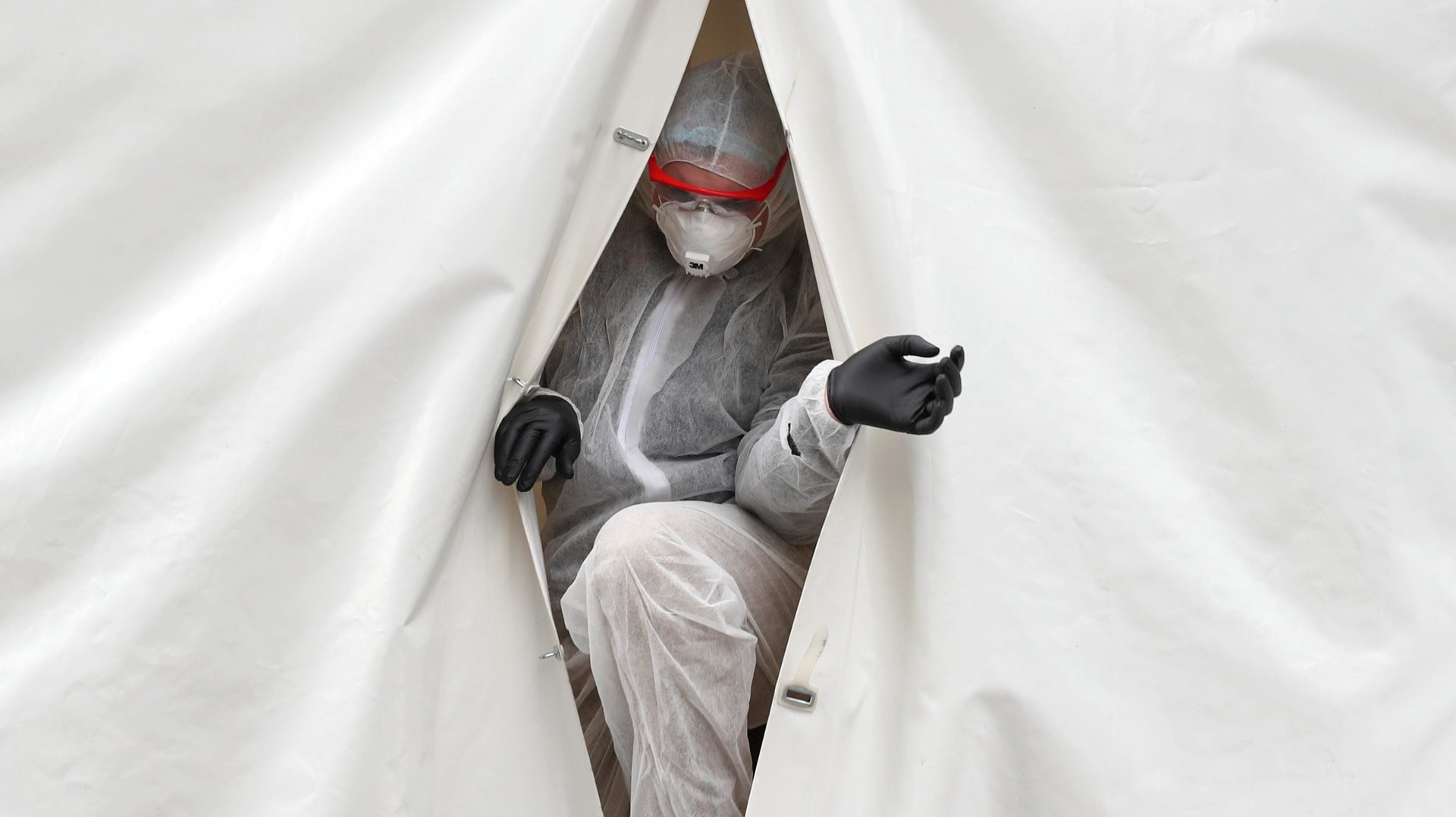How at-home coronavirus testing could contribute to healthcare inequalities
At-home diagnosis could be a valuable tool to stem the spread of Covid-19. Patients could avoid crowded medical centers, and healthcare workers wouldn’t need to use precious personal prospective equipment (PPE) to administer tests. So far, only one at-home diagnostic test meets US Food and Drug Administration (FDA) standards, but several companies are hoping to have their tests authorized soon.


At-home diagnosis could be a valuable tool to stem the spread of Covid-19. Patients could avoid crowded medical centers, and healthcare workers wouldn’t need to use precious personal prospective equipment (PPE) to administer tests. So far, only one at-home diagnostic test meets US Food and Drug Administration (FDA) standards, but several companies are hoping to have their tests authorized soon.
As companies roll out more at-home tests, though, varying degrees of access could contribute to existing healthcare inequalities in the United States.
Labcorp’s at-home coronavirus diagnostic test, which was granted Emergency Use Authorization (EUA) on April 21, currently has to be paid for out of pocket. And while those tests will eventually be reimbursed by insurance, the upfront cost—$119—is a significant barrier to access. It can often take at least a month for US insurers to reimburse customers for health costs.
Early data suggests stark racial inequalities in coronavirus outcomes already exist. “A disproportionate number of people of color are dying from Covid compared to white counterparts,” says James Krellenstein, founder of Covid-19 Working Group, an emergency coalition of doctors, scientists, community workers, and activists working to address coronavirus in New York. As of April 14, African Americans made up 15% of the population in Illinois but 43% of those who died from the disease, reports the New York Times; in Louisiana, African Americans make up one third of the population but around 70% of coronavirus deaths.
A lack of testing may contribute to these deadly disparities. Minority groups in the US make up a disproportionate number of essential worker delivery jobs, which entail more exposure to the virus. And with no paid time off, these workers have to give up income to get a test. Doctors are also less likely to refer African Americans for coronavirus tests even when they show signs of the disease, according to NPR.
The inequalities in point-of-care testing could translate to at-home testing. “We know we’re under-testing under-served communities,” says Krellenstein. “Then you take a promising testing modality, and require someone to put hundred of dollars out of pocket and wait weeks and months to have an insurance company reimburse you, that’s only going to exacerbate inequalities in this epidemic.”
LabCorp is taking steps to mitigate these concerns: It currently has 65,000 tests available, and is only making them available to healthcare workers and first responders. Uninsured patients will not have to pay for the test upfront, and LabCorp said it’s working to streamline the process for those with insurance. In two weeks’ time, LabCorp says patients will be able to provide their health insurance information to get the test, and won’t have to pay ahead of time.
Meanwhile, the FDA is continuing to work with companies to authorize more at-home tests. “The FDA sees the public health value in expanding the availability of Covid-19 testing through safe and accurate tests that may include home collection, and we are actively working with test developers in this space,” its public statement reads. But without similar measures to address access issues, these tests will largely be unavailable to those who can’t afford a $100 outlay.
One company, Vault, says it expects its at-home saliva-based diagnostic test to be authorized for public use shortly (though it has said this every day for the past week). Vault isn’t in-network with insurance carriers, so it will provide billing documents to support reimbursement. Bu this approach still leaves patients to pay out of pocket and wait for reimbursement, making it less accessible to those who are financially unstable. While LabCorp proceeded quickly and is only now streamlining a process for submission, Vault could use the time ahead of authorization to create alternative solutions with insurance companies.
In the meantime, those who have trouble accessing diagnostic tests should be wary of convenient options. Brian Rubin, chair of the Robert J. Tomsich Pathology and Laboratory Medicine Institute at the Cleveland Clinic in Ohio, warned against tests that haven’t been authorized. “Be careful of companies that might be taking advantage in this time where everybody’s a little scared of Covid,” he said. The FDA emphasizes in a statement that “any Covid-19 test intended for at-home testing, including self-collection of a specimen at home, with or without the use of telemedicine, requires an authorized EUA.” But the CARES act only requires insurance to pay for tests “approved, cleared, or authorized” by the FDA.
In the long run, at-home testing could help solve some of the disparities in access to Covid-19 care. For now, the limited number of diagnostic tests available are being prioritized for sick patients, healthcare workers, and first-responders. But some within those groups, like rural healthcare workers, don’t have much access to testing facilities. “Every lab has a certain capacity,” says Rubin. “We’re never going to get to the point where we can test everybody.”
David W. Hutton, an associate professor of health management and policy at the University of Michigan School of Public Health, says testing next should next be funneled toward the contacts of those found to be positive, then people with mild symptoms, followed by essential workers and vulnerable populations, such as hard-hit communities in Detroit.
Those final two groups aren’t yet being prioritized for testing in the US. “With all that said, I am enthusiastic that in the next month or so, there will be many more tests available, some of which will be at-home tests, and we can reach more and more of these priority groups,” Hutton said. But as long as they’re offered with significant upfront costs, they’re largely inaccessible to those without financial safety nets.